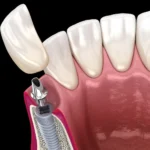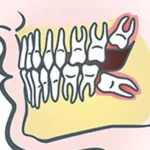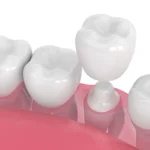Are you facing gum disease and wondering how long treatment will take? Understanding the different types of treatments available, factors that influence recovery time, and tips for faster healing can help you navigate your journey to healthier gums. Let’s delve into the world of gum disease treatment together!
Understanding Gum Disease
Gum disease, also known as periodontal disease, is a common condition that affects the tissues surrounding your teeth. It typically starts with gingivitis, causing redness, swelling, and bleeding of the gums. If left untreated, it can progress to more severe forms like periodontitis.
The main culprit behind gum disease is plaque buildup on teeth from bacteria. This sticky film can harden into tartar if not removed through proper oral hygiene practices like brushing and flossing regularly.
Symptoms of gum disease include bad breath, receding gums, loose teeth, and changes in bite alignment. Factors such as smoking, diabetes, genetics, and poor nutrition can increase your risk of developing gum disease.
Regular dental check-ups are crucial for early detection and treatment of gum disease to prevent further complications. Taking proactive steps towards maintaining good oral health can significantly reduce your chances of experiencing the adverse effects of gum disease down the line.
Types of Gum Disease Treatments
Gum disease treatments vary depending on the severity of the condition. For mild cases, professional dental cleaning to remove plaque and tartar buildup is often sufficient. This process, known as scaling and root planing, helps to eliminate bacteria from below the gumline.
If gum disease has progressed to a more advanced stage, additional interventions may be necessary. These can include antibiotics to reduce infection and inflammation or surgical procedures like flap surgery or bone grafts for severe cases.
In some instances, laser therapy may be used as a minimally invasive treatment option for targeting diseased gum tissue while promoting regeneration of healthy gums. Your dentist will recommend the most suitable treatment based on your individual needs and the extent of your gum disease.
Regular follow-up appointments are crucial to monitor progress and ensure that the treatment is effectively combating the disease. Remember that early detection and intervention play key roles in successful gum disease management.
Factors That Affect Treatment Time
When it comes to gum disease treatment, the time it takes to restore oral health can vary based on several factors. One key factor is the stage of gum disease a patient is experiencing. Early stages like gingivitis may require less intensive treatment compared to advanced periodontitis.
Another crucial factor influencing treatment time is individual oral health habits and hygiene practices. Patients who maintain good oral hygiene at home through regular brushing, flossing, and dental visits often see faster results in their treatment process.
Additionally, underlying health conditions such as diabetes or immune disorders can impact how quickly gum disease responds to treatment. These systemic factors may require additional considerations during the course of therapy.
Adherence to post-treatment care instructions provided by your dentist plays a significant role in determining the overall duration of gum disease treatment. Compliance with follow-up appointments and recommendations for ongoing maintenance can help expedite healing and prevent future complications.
Average Length of Treatment for Each Stage of Gum Disease
Understanding the average length of gum disease treatment for each stage is crucial in managing your oral health effectively. For gingivitis, the mildest form of gum disease, treatment often involves professional cleaning and improved oral hygiene practices. This stage typically lasts a few weeks to a month with proper care.
As gum disease progresses to periodontitis, the treatment becomes more intensive. Scaling and root planing procedures may be necessary to remove tartar and bacteria below the gumline. The duration of this treatment can vary depending on the severity of the condition, ranging from several weeks to a few months.
In advanced cases of periodontitis, surgical interventions like flap surgery or bone grafting may be required to restore oral health. These treatments can take several months to complete, with post-operative care being essential for successful recovery.
Regular follow-up appointments with your dentist are vital throughout all stages of gum disease treatment to monitor progress and make any necessary adjustments along the way. By understanding the timeframes involved in treating each stage of gum disease, you can better prepare for your journey towards healthier gums.
Tips for Faster Healing and Recovery
To promote faster healing and recovery from gum disease treatment, it is essential to follow your dentist’s instructions meticulously. Make sure to adhere strictly to the prescribed oral hygiene routine, including regular brushing and flossing.
Incorporating anti-inflammatory foods like leafy greens, berries, and nuts into your diet can aid in reducing swelling and promoting gum health. Avoiding sugary snacks and beverages can also help prevent further damage to your gums.
Stay hydrated by drinking plenty of water throughout the day as this helps flush out toxins from your body and promotes overall oral health. Additionally, avoid smoking or using tobacco products as they can hinder the healing process.
Regularly attending follow-up appointments with your dentist is crucial for monitoring progress and addressing any concerns promptly. By maintaining good oral hygiene practices consistently, you will support the healing of your gums and prevent future occurrences of gum disease.
Importance of Regular Dental Check-Ups and Maintenance
Regular dental check-ups and maintenance play a crucial role in preventing and treating gum disease. By visiting your dentist routinely, you can catch any signs of gum disease early on before it progresses into a more severe condition. During these check-ups, your dentist will assess the health of your gums, identify any issues, and recommend appropriate treatment.
Dental cleanings also help remove plaque and tartar buildup that contribute to gum disease development. Professional cleanings reach areas that regular brushing and flossing may miss, helping to keep your gums healthy.
Furthermore, maintaining good oral hygiene practices at home is essential for preventing gum disease between dental visits. Brushing twice a day, flossing daily, and using an antiseptic mouthwash can all aid in keeping bacteria at bay.
Remember that prevention is key when it comes to gum disease. By staying proactive with regular dental check-ups and diligent oral care habits, you can significantly reduce the risk of developing or worsening gum disease.
Conclusion
Gum disease treatment duration can vary depending on the severity of the condition and individual factors. It is essential to address gum disease promptly to prevent further complications and maintain good oral health. By understanding the types of treatments available, factors that affect treatment time, average length of treatment for each stage of gum disease, and tips for faster healing and recovery, individuals can take proactive steps in managing their oral health.
Regular dental check-ups and proper maintenance are crucial in preventing gum disease from progressing or recurring. Maintaining good oral hygiene practices at home along with professional dental care can help keep gums healthy and reduce the risk of developing severe forms of periodontal disease.
Remember, early detection and intervention are key in successfully treating gum disease. By working closely with your dentist or periodontist, following their recommendations, and staying committed to your oral care routine, you can achieve optimal outcomes in your gum disease treatment journey. Prioritize your oral health today for a healthier smile tomorrow!












